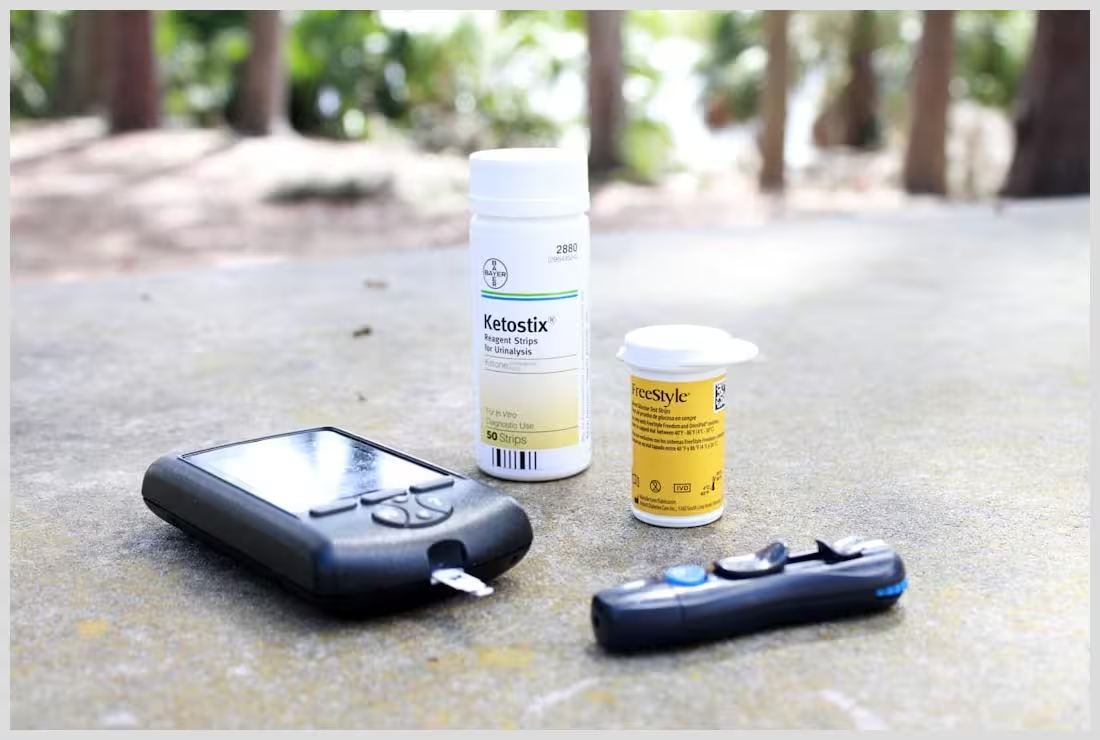In this article:
In this comprehensive guide, we’ll dive into the fundamentals of WordPress local development environments, the importance of modular design and synchronization, and the challenges faced when syncing local and live sites. We’ll also provide a detailed walkthrough on setting up your environment with Modular DS, compare it with other popular tools, and share real-world success stories. Best practices, common pitfalls, and optimization tips will help you maintain your WordPress sites efficiently.
Key points covered in this article include
- Understanding local WordPress development environments and their benefits
- The role of modular design and syncing modules for scalable site upkeep
- Challenges in syncing local and live WordPress environments
- Step-by-step setup and synchronization using Modular DS
- Comparative analysis of Modular DS versus other WordPress management tools
- Real-world case studies demonstrating workflow improvements
- Best practices and common mistakes to avoid
- Technical features and integrations of Modular DS
The Fundamentals of WordPress Local Development Environments
Before jumping into syncing and modular workflows, it’s crucial to grasp what a local development environment is. Simply put, it’s a setup on your own computer where you can build, test, and tweak WordPress sites without affecting the live version. This sandbox-like space lets you experiment freely, catch bugs early, and ensure everything works perfectly before going public.
Local WordPress setups offer several benefits. They speed up development by eliminating the need to upload files repeatedly to a remote server. You can work offline, which is handy during travel or unstable internet connections. Plus, testing new plugins, themes, or custom code locally reduces the risk of breaking your live site.
Common tools to create these environments include Local by Flywheel, DevKinsta, XAMPP, and MAMP. Each provides an easy way to run a web server, PHP, and MySQL database on your machine, mimicking the live hosting environment.
In a local setup, you manage your WordPress files (core, themes, plugins) and the database separately. Understanding this separation helps when syncing changes later. For example, plugin updates might involve file changes, while content updates affect the database.
By working locally, you reduce risks significantly. You avoid downtime, prevent accidental data loss, and can test security patches thoroughly. This approach is a cornerstone of professional website upkeep and maintenance.
The Role of Modular Design and Module Synchronization in WordPress Projects
Modular design means breaking your WordPress site into smaller, manageable pieces or “modules.” These can be plugins, themes, or custom code blocks that function independently but work together to build the full site.
Why does modularity matter? For one, it makes your site easier to maintain and scale. Instead of dealing with a monolithic codebase, you update or replace individual modules without disrupting the whole system. This flexibility is vital for agencies juggling multiple client sites or freelancers managing diverse projects.
Module synchronization is the process of keeping these components consistent between your local environment and the live site. It ensures that plugin versions, theme customizations, and custom code changes are aligned, preventing conflicts and errors.
For example, if you develop a custom plugin locally, syncing it with the live site means transferring the updated files and database changes safely. Modular workflows enable you to isolate changes, test them thoroughly, and deploy confidently.
Agencies and freelancers benefit from modular workflows by streamlining updates, reducing downtime, and improving collaboration. Modular DS, for instance, supports this approach by automating sync tasks and centralizing management.
Challenges in Syncing WordPress Local Development Environments with Live Sites
Syncing local and live WordPress environments isn’t always straightforward. Common issues include database conflicts, where changes made on the live site clash with local updates. File overwrites can accidentally erase customizations if not handled carefully.
Plugin and theme version mismatches are another headache. If your local environment runs newer versions than the live site, pushing updates without testing can break functionality.
Working directly on production sites is risky. It exposes your site to errors, downtime, and security vulnerabilities. That’s why local development and staging environments are essential for safe updates.
Managing dependencies and version control adds complexity. You need to track which versions of plugins, themes, and WordPress core are running where. Using Git or similar tools helps maintain order but requires discipline.
Automated backups and security checks during sync are critical. Losing data or introducing malware during deployment can be disastrous. Modular DS addresses these challenges by offering automated backups, malware scanning, and firewall protection integrated into its platform.
Step-by-Step Guide to Setting Up WordPress Local Development Environments and Syncing with Modular DS
Let’s walk through setting up your local WordPress environment and syncing it with Modular DS.
Preparing Your Local Environment
First, choose a local development tool like Local by Flywheel or DevKinsta. Install it on your computer and create a new WordPress site. Configure PHP, MySQL, and web server settings as needed.
Next, install your themes, plugins, and import your database if you’re cloning an existing site. Make sure everything runs smoothly locally.
Connecting Local Sites to Modular DS
Sign up for Modular DS at https://modulards.com/en/?fpr=bilbo . Install the Modular DS plugin on your local WordPress site and connect it to the platform using the provided API keys.
This connection enables Modular DS to monitor your local environment, sync modules, and automate maintenance tasks.
Syncing Modules: Plugins, Themes, and Custom Code
Use Modular DS to push plugin and theme updates from your local environment to the live site. The platform handles version checks and dependency management to avoid conflicts.
For custom code blocks, Modular DS supports file synchronization and database updates, ensuring your changes reflect accurately on the live site.
Managing Database Synchronization Safely
Database syncing is delicate. Modular DS offers tools to export and import database changes selectively, preventing overwrites of live content like user comments or orders.
Always backup both local and live databases before syncing.
Automating Updates and Backups through Modular DS
Configure scheduled backups and automated plugin/theme updates within Modular DS. This automation reduces manual work and ensures your sites stay secure and up-to-date.
Best Practices for Testing and Deploying Changes
- Test all changes locally before syncing
- Use staging environments if possible
- Backup regularly
- Communicate changes clearly with clients
- Monitor site health post-deployment
Comparing Modular DS with Other WordPress Management Tools for Local Development and Sync
| Feature | Modular DS | ManageWP | MainWP | InfiniteWP | WP Umbrella | WP Remote |
|---|---|---|---|---|---|---|
| Local Environment Sync | Yes | Limited | Limited | Limited | Limited | Limited |
| Centralized Dashboard | Yes | Yes | Yes | Yes | Yes | Yes |
| Automated Backups | Cloud-based, scheduled | Yes | Yes | Yes | Yes | Yes |
| Security Monitoring | Malware scanning, firewall | Basic | Basic | Basic | Advanced | Basic |
| White-label Features | Full white-label | Partial | Partial | Partial | Partial | Partial |
| Pricing | Competitive, lifetime deal option | Subscription-based | Subscription-based | Subscription-based | Subscription-based | Subscription-based |
| Client Reporting Automation | Yes | Yes | Yes | Limited | Limited | Limited |
Pros and Cons of Each Tool
Modular DS offers comprehensive local environment syncing, full white-label options, and advanced security features. Its lifetime deal pricing is attractive for agencies managing multiple sites. However, it may require some learning curve for beginners.
ManageWP is user-friendly with a centralized dashboard but has limited local sync capabilities and partial white-label support.
MainWP is open-source and flexible but requires more manual setup and offers limited automation.
InfiniteWP focuses on bulk updates but lacks robust local environment syncing.
WP Umbrella excels in security monitoring but has limited local sync features.
WP Remote is simple but basic in features compared to others.
Overall, Modular DS stands out for agencies and freelancers needing reliable local development syncing combined with powerful management and automation tools.
Real-World Use Cases and Success Stories with Modular DS
Many agencies and freelancers have transformed their workflows using Modular DS. Here are some examples
Case Study 1: Agency Managing 20+ Client Sites
This agency struggled with manual updates and inconsistent backups. After adopting Modular DS, they automated backups, centralized updates, and synced local development environments seamlessly. Downtime dropped drastically, and client satisfaction improved.
Case Study 2: Freelancer Automating Maintenance Workflows
A solo freelancer managing multiple small business sites used Modular DS to automate plugin updates and backups. The platform’s modular sync allowed safe deployment of custom code changes without risking live site errors.
Case Study 3: E-commerce Site Using Modular DS for Staging and Deployment
An online store used Modular DS to maintain a staging environment locally, test new features, and push updates confidently. The automated security scans and backups provided peace of mind during high-traffic sales periods.
These cases highlight how Modular DS improves efficiency, reduces errors, and supports scalable website upkeep.
Best Practical Tips for WordPress Local Development & Modular Sync with Modular DS
Setting Up Local WordPress Environments
- Choose tools like Local by Flywheel or DevKinsta for easy setup.
- Configure PHP, MySQL, and web server settings to match live hosting.
- Import existing databases and install themes/plugins locally for testing.
- Work offline to speed development and reduce live site risks.
Modular Design & Synchronization
- Break your site into independent modules (plugins, themes, code blocks).
- Sync modules selectively to keep local and live sites consistent.
- Use Modular DS to automate syncing of plugins, themes, and custom code.
- Modular workflows reduce downtime and improve collaboration.
Safe Syncing & Backup Practices
- Always backup local and live databases before syncing.
- Use Modular DS’s selective database export/import to avoid overwriting live content.
- Avoid working directly on production sites; use staging or local environments.
- Automate backups and updates to reduce manual errors.
Best Practices for Testing & Deployment
- Test all changes thoroughly in local or staging environments before syncing live.
- Communicate clearly with clients about updates and maintenance schedules.
- Monitor site health and uptime immediately after deployment.
- Use Agile workflows like Scrum or Kanban to organize tasks efficiently.
Optimizing Workflow with Modular DS
- Automate repetitive maintenance tasks like backups and updates.
- Manage multiple client sites from a centralized dashboard.
- Leverage white-label reporting to enhance client communication.
- Integrate with Slack, Google Analytics, and other tools for streamlined workflows.
Best Practices for Website Maintenance Using Local Development and Modular Sync
- Schedule regular backups and automate update tasks to avoid manual errors.
- Use version control systems like Git alongside Modular DS for tracking changes.
- Always test updates locally before pushing to live to catch issues early.
- Monitor uptime and security continuously to protect your sites.
- Organize workflows with Agile methodologies such as Scrum or Kanban for better task management.
- Leverage Modular DS’s client communication and reporting tools to keep stakeholders informed.
Comparison of WordPress Management Tools Features
Common Mistakes to Avoid When Setting Up and Syncing WordPress Local Environments
- Working directly on production sites without staging or local testing.
- Ignoring plugin and theme compatibility checks before syncing.
- Skipping backups prior to synchronization, risking data loss.
- Poor version control leading to conflicts and overwrites.
- Neglecting security monitoring during sync processes.
- Failing to utilize automation tools like Modular DS to streamline workflows.
How to Optimize Your WordPress Development Workflow with Modular DS
Modular DS helps you automate repetitive maintenance tasks, freeing up time for development and client work. Its centralized dashboard allows managing multiple sites effortlessly. White-label reporting enhances client transparency, building trust.
Integration with third-party tools like Slack and Google Analytics streamlines communication and performance tracking. As your business grows, Modular DS scales with you, supporting more sites and complex workflows without adding overhead.

Setup wordpress local development environments sync modulards
In-Depth Technical Features of Modular DS for Local Development and Sync
Modular DS offers real-time monitoring and alerting to catch issues early. Its cloud backup architecture complies with GDPR, ensuring data privacy and security.
Security modules include malware scanning, firewall protection, and vulnerability updates, keeping your sites safe from threats.
Bulk update management for plugins and themes saves time and reduces errors. Database synchronization technology ensures safe and selective data transfers between environments.
API integrations allow extending Modular DS capabilities and connecting with other tools in your workflow.
Frequently Asked Questions About WordPress Local Development and Modular DS Sync
- What is the best way to sync local WordPress sites with live servers? Using tools like Modular DS that automate file and database synchronization while managing dependencies and backups is recommended.
- Can Modular DS handle multiple client sites efficiently? Yes, it is designed for agencies and freelancers managing numerous sites with centralized dashboards and automation.
- How does Modular DS ensure data security during sync? It uses encrypted connections, automated backups, malware scanning, and firewall protection to safeguard data.
- What are the system requirements for using Modular DS? A standard WordPress hosting environment with PHP 7.4+, MySQL 5.7+, and internet access for cloud features.
- How does Modular DS compare cost-wise with other tools? Modular DS offers competitive pricing with a lifetime deal option, often more cost-effective than subscription-based competitors.
- Is Modular DS suitable for beginners or only advanced users? While it has advanced features, Modular DS is user-friendly and suitable for intermediate users with some WordPress experience.

Setup wordpress local development environments sync modulards
Opinions and Feedback from Real Users About Modular DS and WordPress Local Sync
“Modular DS transformed how I manage my client sites. The automation saves me hours every week, and syncing local changes is seamless.” – Agency Owner, Reddit r/WordPress
“I was hesitant at first, but Modular DS’s security features gave me confidence. The white-label reports impress my clients.” – Freelancer, WordPress Forums
Users appreciate Modular DS for its automation, ease of use, and robust security. Some request more integrations and beginner tutorials, which the company is actively developing.
Overall sentiment is positive, with many recommending Modular DS for agencies and freelancers focused on efficient website maintenance.
References and Further Reading
Frequently Asked Questions
- How do I start with WordPress local development? Choose a local environment tool like Local by Flywheel, install WordPress, and set up your site locally to begin testing and development.
- What makes Modular DS different from other management tools? Its robust local environment syncing, full white-label features, and automation capabilities set it apart.
- Is syncing databases risky? It can be if not done carefully. Modular DS provides selective syncing and backups to minimize risks.
- Can I use Modular DS for a single site? Yes, but it’s especially beneficial for managing multiple sites efficiently.
- Does Modular DS support staging environments? Yes, it integrates staging workflows to test changes before going live.
What do you think about syncing WordPress local environments? Have you tried Modular DS or other tools? How would you improve your workflow? Share your thoughts and questions in the comments below!


















